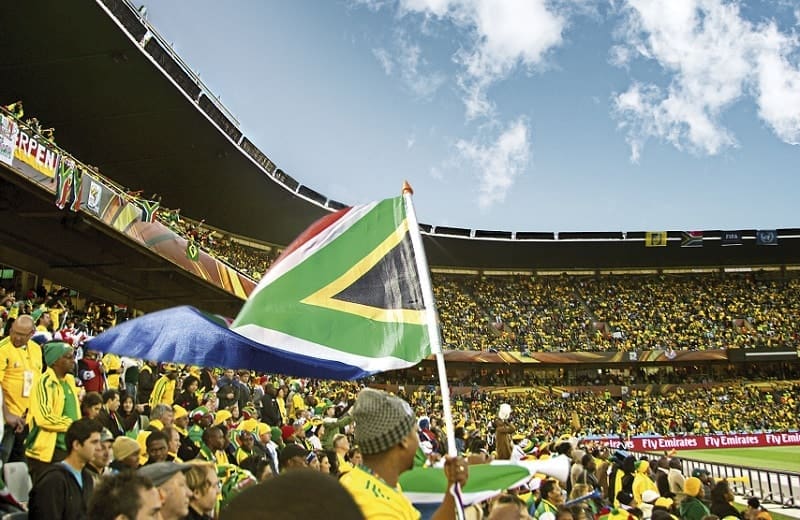During the 2010 football world cup in South Africa, we saw something that has never happened before. We saw teams like Slovakia which was their first world cup as an independent team, other than that we saw North Korea, Honduras, New Zealand and Algeria making their first appearance after a long time in FIFA world cup during 2010. At the same time, there were several online bookmakers that rose into prominence after the world cup like Bet365 and Betway among others. Especially Betway, the sponsor of the English Premier League team West Ham United, has established itself as one of the leading bookmakers in South Africa. The brand offers a lot of different sporting events such as cricket, football, boxing and tennis and is also well known for its easy-to-use mobile app. You can find a detailed review about Betway here.
Stadiums
We can undoubtedly say that Football world cup has tremendously evolved after the 2010 world cup. That is because, during the next FIFA world cup which was held from 12th June to 13th of July in Brazil 2014, we saw a skyrocketing number of cities hosting the 2014 world cup. Brazil held the world cup of 2014 in 12 different cities (which is more than any other finals on record up until then). The venues were: Naus, Fortaleza, Natal, Recife, Salvador, Cuiaba, Brasilia, Belo Horizonte, Rio de Janeiro, Sao Paolo, Curitiba and Porto Alegre.
But soon after 2014, during the next FIFA world cup 2018 in Russia, we saw a downfall in the number of cities as well as a number of stadiums included for 2018 world cup. As a matter of fact, the number of cities and stadiums were lesser than the minimum number proposed by FIFA association! During the final announcement of stadiums and cities, it was made clear that Russia will offer only 11 cities and 12 stadiums. The reason behind it was that Russia was not able to reconstruct the old stadiums on time.
Fans
Football fans are the ones that make football successful. According to FIFA association, the number of tickets sold during 2010 FIFA world cup were more than 3 million, but during 2014 when the FIFA world cup took place in Brazil, ticket sale degraded to 2.6 million! We saw a tremendous downfall here followed by more disappointment, as total tickets sold at 2018 FIFA world cup was only about 2.4 million, which is less than last time and far less than the ticket sales in South Africa in 2010. Experts think this happened due to the lesser number of stadiums and cities were made available for the people of Russia.
Significant Changes after the 2010 World Cup
After 2010 FIFA world cup many changes were made to make the game fair for all. One of the most popular was the use of technology to avoid ghost goals. During 2014 FIFA world cup in Brazil, they introduced ‘Goal control system’, it was used to determine if a goal has been scored or not. It uses seven unique high-speed cameras around each goal posts, which makes a total of 14. How they used it? Well, when the ball crosses the goal line, the special high-speed cameras make sure that the ball actually crossed the line and the referee wears a watch which vibrates when a goal has been scored. Implementation of such technology shows us how serious people are about football, and it only grew after the 2010 world cup.
The second change noticed during 2014 world cup is the use of vanishing spray, as the name suggests it vanishes after a short period. These types of sprays are idle for football matches as we need to mark lines on the grass during matches when we need to mark a ten-yard line for the defending team or mark a spot for a free-kick.
The Adidas Brazuca was the official match ball of the 2014 FIFA World Cup. In 2014 Adidas created a new design for the match ball after it was criticized for previous FIFA 2010 match ball. In the new match ball, the number of panels was reduced to six only and panels were thermally bonded. This slight change to the geography of the ball created an unthinkable increase in consistency and aerodynamics of the new ball. Compared to its predecessor it was something of its kind. It took Adidas 2 years of research and testing to create such a beast of a ball which would save them from the criticism of last year.
Introducing Adaptability into Football
After the World Cup in South Africa the next venue was Brazil where the temperature was a significant factor for the players. The effect of temperature, humidity, wind speed and visible and infrared radiation (usually sunlight) makes it difficult for humans to continuously play in such a hot weather in which temperature rises to more than 90°F (which is 32°C). Now to continue playing, it was time for football to evolve and adapt to the situation. FIFA found a way out of this; they called it ‘cooling breaks’. Cooling breaks can be called by the referee, only when the wet-bulb temperature rises to 32 degrees Celsius or more and after 30th minutes of each half.
First Biological Passport in History of FIFA
Up until the 2010 World Cup, no strong measures were taken against doping. But it all changed afterwards during 2014 when the first Biological Passport was introduced in FIFA’s history. To create this biological passport, samples of blood and urine are collected before the match. Two players per team per game were tested for doping before any official match.
